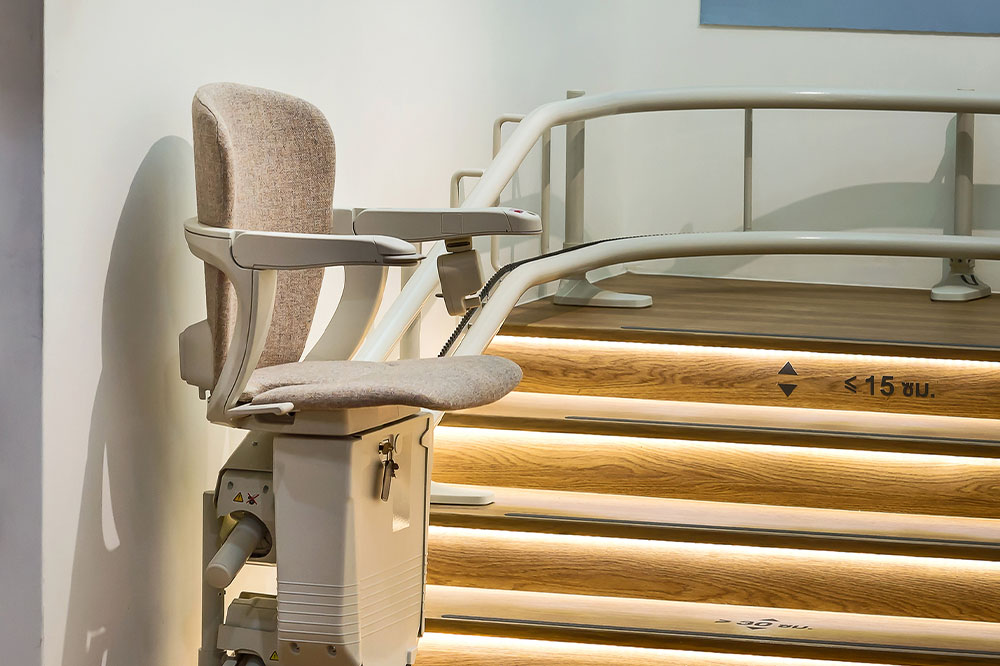
Stair lifts – Their types, advantages, and disadvantages
Navigating stairs can be daunting and sometimes impossible for individuals with mobility issues. Stair lifts provide a practical solution by making moving between different levels of an enclosed space safe and convenient. The latest versions of this mechanical device feature adjustable seat height, battery isolation switches, call stations, key switches, speed governors, folding steps, etc. This article explores stair lifts, discusses the various types available, and examines their pros and cons to help you make an informed decision.
Stair lifts – What they are
Also known as a chairlift or stair chair, a stair lift is a motorized device designed to transport people up and down staircases. It comprises a seat or platform attached to a rail system installed along the stairs. With minimal physical effort, the user can operate the stair lift with a remote control or joystick to ascend or descend staircases.
Types
Here are a few common types of stair lifts:
- Straight stair lifts: Straight stair lifts designed for staircases with linear trajectories, without curves or landings, are the most common. They are relatively easy to install and usually more affordable than other stair lifts.
- Curved stair lifts: These stair lifts are custom-built to navigate staircases with curves, angles, or intermediate landings. The rail system of curved chairlifts is tailored to fit the unique shape of the staircase, making them more expensive and requiring professional installation.
- Outdoor stair lifts: These stair lifts can withstand outdoor weather conditions as they contain durable materials that include weather-resistant features to ensure safe and reliable operations in exterior settings.
- Wheelchair vertical platform stair lifts: These are much larger than the domestic stair lift and are used to transport a wheelchair or scooter with the person. Wheelchair-platform stair lifts are mostly used in public buildings.
Advantages
A few advantages of stair lifts are as follows:
- Enhanced accessibility: Stair lifts provide a practical solution for individuals with limited mobility, enabling them to move freely and independently between different levels of their homes.
- Safety and security: Stair lifts have safety features such as seatbelts, swivel seats, and obstruction sensors to ensure a secure and risk-free ride. They reduce the chances of accidents or falls that are likely to happen when manually attempting to navigate staircases.
- Easy to use: Stair lifts are designed with user-friendly controls, making them accessible to people of all ages and with physical disabilities. Their ease of operation allows individuals to control their movement on staircases effortlessly.
Disadvantages
The disadvantages of stair lifts are as follows:
- Cost: Stair lifts can be a significant financial investment, especially for curved or customized installations. The cost includes the price of equipment, installation, and any necessary modifications to the staircase.
- Space requirements: Stair lifts occupy a certain amount of space on the staircase, which can obstruct the movement of other individuals or objects. Before installing a chairlift, consider the available space and its potential impact on stair usage.
- Dependency on power: Stair lifts operate on electricity and may not function during power outages. However, many models come with battery backup systems to ensure uninterrupted use.
Stair lifts provide a practical and reliable solution for individuals with mobility challenges, offering enhanced accessibility and safety within their homes. Understanding the different types of chairlifts and their pros and cons is crucial in determining the most suitable option for specific needs. Install the right one to improve mobility and independence while navigating staircases.




